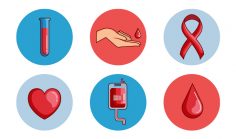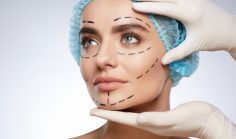Approximately 55% of women going through menopause don’t do anything at all to treat symptoms. In a woman’s reproductive years, the ovaries produce estrogen and progesterone during the ovulatory cycle to prepare the uterus for a possible pregnancy. During menopause, the ovarian production of both of these hormones essentially ceases. Estrogen helps maintain good bone density, regulates body temperature, and helps maintain vaginal lubrication and elasticity. When estrogen and progesterone levels drop, many women experience symptoms that can be bothersome, like hot flashes, night sweats, palpitations, sexual problems, forgetfulness, and more. Many women benefit from increasing their hormone levels with a form of treatment called hormone replacement therapy (HRT) that helps reduce and manage menopausal symptoms.
Hormone replacement therapy can use either estrogen, progestin (a form of progesterone designed to protect against endometrial cancer), or a combination of the two, and can come in a variety of delivery modes. ACOG and the U.S. Preventative Services Task Force both advise against long-term hormone therapy to prevent diseases. Hormone treatment may help prevent osteoporosis, but long-term hormone treatment increases your risk of blood clots, heart attacks, stroke, and other problems. One study published in the April 4th 2007 issue of JAMA found that women who begin hormone therapy early, within 10 years of menopause, seem to have less of a risk of heart disease than women who wait until they are older to start taking the medication. A second study published in JAMA in 2008, researchers found that the risks of hormone therapy outweigh the benefits. If you do elect to take hormone therapy, ACOG recommends using the lowest dose that works for only as long as you need it.
Estrogen-only medications are prescribed to raise estrogen levels in post-menopausal women without uteruses and women who have undergone a bilateral oophorectomy (both ovaries removed). Women with uteruses should not take estrogen-only medications due to the risk of estrogen overgrowth, which could lead to the development of certain cancers including endometrial cancer. Estrogen-only medication can treat many symptoms of menopause, but it has been proven to be most effective in reducing hot flashes and night sweats. Local estrogen vaginal creams are most effective in treating vaginal dryness and discomfort. Patients taking estrogen observe a 65-90% decrease in the severity of hot flashes due to treatment. One recent study suggests that early, short-term estrogen treatment without progestin can protect you from heart disease later in life—but this is still new, and needs more research. Women with uteruses are recommended to take an estrogen-progesterone combination medication, which puts them at a lower risk for endometrial cancer.
According to the FDA, common side effects of estrogen-only therapy include:
- Headaches
- Painful or tender breasts
- Vaginal spotting
- Stomach cramps/ Bloating
- Nausea and vomiting
- Hair loss
- Fluid retention
- Vaginal yeast infection
Rarer, more serious side effects include:
- Stroke or blood clots
- Endometrial Cancer in women who still have their uterus and who do not use progestin with estrogen-only medicines
- Dementia in women 65 years and older
- Gallbladder disease or high triglyceride (cholesterol) levels that could lead to problems with your pancreas
- Vision loss caused by a blood clot in the eye
- Liver Problems
- High Blood Pressure
- Severe allergic reactions
Progestin-only medications. Progestogen-only medications initially underwent clinical studies for menopause treatment as a possibly lower risk alternative to estrogen-only medications. However, studies have not found progestogen-only treatment to be effective for treating menopause symptoms. Progestogen-only treatments can be combined with estrogen-only treatments to lower the risk of endometrial cancer.
Common side effects for progestin-only medications include:
- Sleepiness
- Drowsiness
- Cough
- Acne
- Breast tenderness
- Joint pain
Estrogen-Progestin medications combine both estrogen and progesterone in a single dose. These lower the risk of endometrial cancer but may increase the risk of breast cancer.
According to the FDA, the most common side effects of estrogen-progestin medicines include:
- Headaches
- Painful or tender breasts
- Vaginal spotting
- Stomach cramps/ Bloating
- Nausea and vomiting
- Hair loss
- Fluid retention
- Vaginal yeast infection
Rarer, more serious side effects include:
- Heart attack or stroke
- Blood clots
- Breast cancer
- Dementia in women 65 years and older
- Gallbladder disease or high triglyceride (cholesterol) levels that could lead to problems with your pancreas
- Vision loss caused by a blood clot in the eye
- Liver problems
- High blood pressure
- Severe allergic reactions
Talk to your doctor about which type of hormone replacement therapy is right for you.
Do not take HRT if you:
- Have vaginal bleeding
- Have had breast or uterine cancer
- Have a bleeding disorder
- Have liver disease
- Have had a blood clot, heart attack or stroke
- Have allergic reactions to hormone medications













